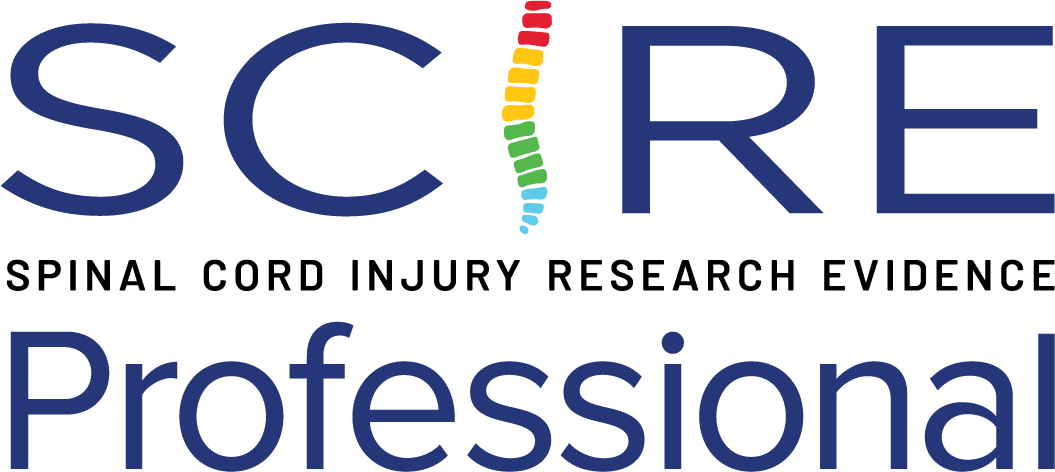- Developed in 1980 to provide a functional assessment that would be useful in documenting the small but clinically significant gains made by people with quadriplegia throughout in-patient rehabilitation.
- The QIF assesses 10 ADLs which represent functional performance activities:
1) Transfers
2) Grooming
3) Bathing
4) Feeding
5) Dressing
6) Wheelchair mobility
7) Bed activities
8) Bowel program
9) Bladder program
10) Understanding of personal care
- The final area is a questionnaire – designed to assess the client’s understanding of skin care, nutrition, equipment medications and infections.
Clinical Considerations
The QIF was designed for individuals with quadriplegia due to SCI.
ICF Domain
Activity ▶ Self Care
Administration
- Clinician-administered; interview format
- Scores are provided to give credit for being able to complete a portion of the task rather than the entire task.
- Administration takes less than 30 minutes when the assessor is familiar with the measure.
Number of Items
37
Equipment
None
Scoring
- The functional performance categories are scored on a 5 point scale from 0 (dependent) to 4 (independent).
- Each category of functional performance is calculated according to weighted scores – Functional performance categories: /180; Understanding of personal care: /20;
- Total score of 200 can be divided by 2 to yield a score out of 100.
Languages
English
Training Required
Does not require advanced training
Availability
Measurement Property Summary
Number of studies reporting psychometric properties: 4
Interpretability
- Higher scores indicate greater independence in key activities of daily living.
- No cut scores or normative data have been established for the SCI population.
- However, published data for the SCI population is available for comparison (see the Interpretability section of the Research Summary sheet).
- MCID: not established in SCI population
- SEM: not established in SCI population
- MDC: not established in SCI population
Reliability – Moderate to High
Number of studies reporting reliability data: 1
Moderate to High inter-rater reliability: r = 0.55-0.95
(Gresham et al. 1986; n=30; injury details not reported)
Validity – High
Number of studies reporting validity data: 3
- High correlation with the Functional Independence Measure: r = 0.97 (p<0.001)
- High correlation with the Functional Independence Measure (FIM)- Self-Care Items – Bathing, Grooming, and Feeding:
- r = 0.91-0.96 (p<0.001)
(Yavuz et al. 1998: N = 29, 20M; mean age 37 years, age range 14-66years; C3-T1 tetraplegic (18 ASIA complete, 11 ASIA incomplete); mean time since injury to admission 20wks (range 2-72wks), average length of stay in rehab centre: 18±10.29 wks)
-
- r = 0.75-0.94
(Marino et al. 1993; n=22; C4-C7, Frankel A-D patients with SCI between 3 and 12 months post-injury)
- High correlation with the Functional Independence Measure (FIM)- Dressing, Transfers, Mobility, and Bowel/Bladder items: r = 0.87-0.99 (p<0.001)
(Yavuz et al. 1998: N = 29, 20M; mean age 37 years, age range 14-66years; C3-T1 tetraplegic (18 ASIA complete, 11 ASIA incomplete); mean time since injury to admission 20wks (range 2-72wks); average length of stay in rehab centre: 18±10.29 wks)
- High correlation with the American Spinal Injury Association (ASIA)- Motor subscale: r = 0.91 (p<0.001)
- High correlation with the ASIA-light touch: r = 0.64 (p<0.001)
- High correlation with the ASIA-pinprick: r = 0.65 (p<0.01)
(Yavuz et al. 1998: N=29, 20M, mean age 37 years, age range 14-66years, C3-T1 tetraplegic (18 ASIA complete, 11 ASIA incomplete), mean time since injury to admission 20wks (range 2-72wks), average length of stay in rehab centre: 18±10.29 wks)
- High correlation with the American Spinal Injury Association (ASIA)- Upper Extremity Motor subscale (UEMS):
- r= 0.75-0.85 (p<0.001)
(Yavuz et al. 1998: N=29, 20M; mean age 37 years, age range 14-66years; C3-T1 tetraplegic (18 ASIA complete, 11 ASIA incomplete); mean time since injury to admission 20wks (range 2-72wks); average length of stay in rehab centre: 18±10.29 wks)
-
- r= 0.84-0.90
(Marino et al. 1993: 22 C4-C7, Frankel A-D spinal cord injury patients between 3 and 12 months post-injury)
Responsiveness
QIF is sensitive in documenting functional improvements in quadriplegics – average improvements detected by QIF was 46%, while Barthel Index detected 20%.
(Gresham et al. 1986; n=30, injury details not reported)
Floor/Ceiling Effect
No values were reported for the presence of floor/ceiling effects in the QIF for the SCI population.
Reviewers
Dr. Carlos L. Cano-Herrera, Elsa Sun
Date Last Updated
December 31, 2024
Gresham GE, Labi ML, Dittmar SS, Hicks JT, Joyce SZ, Stehlik MA. The Quadriplegia Index of Function (QIF): sensitivity and reliability demonstrated in a study of thirty quadriplegic patients. Paraplegia 1986;24:38-44
http://www.ncbi.nlm.nih.gov/pubmed/3960588
Marino RJ, Rider-foster D, Maissel G, Ditunno JF. Superiority of motor level over single neurological level in categorizing tetraplegia. Paraplegia. 1995;33(9):510-3.
http://www.ncbi.nlm.nih.gov/pubmed/8524603
Spooren AI, Janssen-Potten YJ, Post MW, Kerckhofs E, Nene A, Seelen HA. Measuring change in arm hand skilled performance in persons with a cervical spinal cord injury: responsiveness of the Van Lieshout Test. Spinal Cord 2006; 44: 772-779.
http://www.ncbi.nlm.nih.gov/pubmed/16819555
Yavuz N, Tezyurek M, Akyuz M. A comparison of two functional tests in quadriplegia: the quadriplegia index of function and the functional independence measure. Spinal Cord 1998;36:832-837.
http://www.ncbi.nlm.nih.gov/pubmed/9881732
